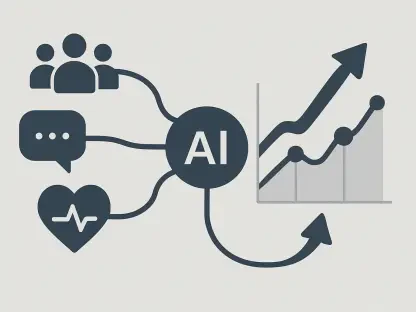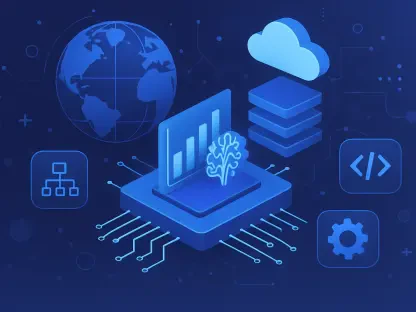Forensic data analysis is an essential practice for organizations aiming to identify potential risks, detect fraudulent activities, and enhance internal controls. This comprehensive guide delves into the methods and importance of forensic data analysis and its crucial role in risk mitigation. As cyber threats and fraudulent activities become increasingly sophisticated, the ability to preemptively identify and address vulnerabilities is vital for safeguarding organizational assets and ensuring compliance with regulatory standards.
Understanding Forensic Data Analysis
Definition and Scope
Forensic data analysis involves the meticulous investigation and interpretation of data to uncover potential risks, suspicious activities, and illegal conduct. This expansive field encompasses various techniques such as decryption, reverse engineering, and system searches, all aimed at producing reliable evidence. These methods serve vital functions, from fraud detection to countering cyberstalking and data theft.
It is a specialized domain requiring knowledge of multiple disciplines, including computer science, statistics, and legal frameworks. Experts in this field are tasked with preserving the integrity of the data while conducting in-depth analyses to reveal hidden patterns or irregularities. The ultimate goal is to produce evidence that is not only accurate but also legally admissible and persuasive in a court of law. As cybercrime evolves, the methods used in forensic data analysis also advance, becoming ever more sophisticated to stay ahead of malicious actors.
Importance for Organizations
Forensic data analysis is not just beneficial for cybersecurity professionals but also for organizational leaders. By integrating these techniques into their risk management frameworks, leaders can significantly enhance their ability to meet compliance requirements and thwart potential threats. Moreover, forensic data analysis provides a proactive approach to risk management, allowing organizations to preemptively identify and address vulnerabilities.
The capacity to detect and mitigate risks before they result in significant damage can save organizations not only financial resources but also reputational capital. Legal compliance is another critical benefit; many industries are subject to stringent regulations regarding data protection and fraud prevention. Forensic data analysis can help organizations stay within the legal boundaries by ensuring they meet all relevant standards. In addition, the insights gained from forensic data analysis can inform strategic decisions and operational improvements, thereby contributing to overall business resilience and efficiency.
The Forensic Data Analysis Process
Data Collection and Acquisition
The initial step in forensic data analysis is the collection and acquisition of data. This involves identifying the necessary data types, locating their sources, and compiling them into structured formats such as data warehouses or data marts. This stage is critical as the accuracy and completeness of data collected directly impact the reliability of the analysis.
During this phase, it is crucial to implement measures to preserve the integrity and confidentiality of the data. Collecting data typically involves accessing various sources, such as databases, email servers, and network logs. Different tools and techniques are used to extract and compile relevant information without tampering with the original data set. The success of subsequent stages of forensic data analysis is heavily dependent on the rigor of the data collection and acquisition process, making this an area that requires meticulous planning and execution.
Examination Techniques
Once data is collected, the next step is examining it through exploratory data analysis. This includes employing various data visualization tools to uncover patterns and anomalies. Visualizations can make complex data sets more understandable and highlight irregular activities quickly. Consistent review and examination of these visual representations are crucial in forming a clear picture of potential risks.
Exploratory data analysis serves as the foundation for more intricate analyses by providing initial insights that guide further investigation. Techniques such as scatter plots, heat maps, and time series charts are commonly used to visualize data and identify trends or outliers. These visual tools transform raw data into a more comprehensible format, making it easier to spot irregularities that warrant deeper examination. As such, this stage lays the groundwork for hypothesis formulation and subsequent testing, thereby playing a pivotal role in the overall forensic data analysis process.
Analysis and Hypothesis Testing
Creating Queries and Processing Results
During this stage, specific queries are formulated to extract pertinent data from the collected information. The results are then processed to identify emerging patterns. This often involves the use of statistical and computational methods to uncover relationships and trends that may indicate fraudulent activities or anomalies.
The ability to generate accurate queries and correctly interpret the results is fundamental to the efficacy of forensic data analysis. Analysts employ advanced tools and algorithms to sift through large volumes of data, separating irrelevant information from valuable insights. This phase can be particularly challenging due to the complexity and sheer volume of data involved. However, the emergence of machine learning and artificial intelligence technologies is facilitating the process by automating aspects of data analysis, thereby increasing its accuracy and speed. The insights gained at this stage inform subsequent steps in the investigative process, making it a cornerstone of effective forensic data analysis.
Formulating and Testing Hypotheses
Hypothesis testing is integral to forensic data analysis. By simulating various scenarios, analysts can determine how certain actions might have led to the suspicious activities under investigation. This method not only helps in understanding the current situation but also in predicting potential future risks.
In this stage, analysts create and test multiple hypotheses to explain the anomalies detected during the earlier phases of analysis. Various statistical techniques, such as regression analysis and cluster analysis, are employed to validate or refute these hypotheses. This iterative process helps build a comprehensive understanding of how and why certain events occurred, thereby providing a robust basis for drawing conclusions and making recommendations. Hypothesis testing also aids in attributing actions to specific individuals or entities, which is crucial for legal proceedings and organizational accountability.
Reporting Findings
Written Reports and Presentations
The final phase of forensic data analysis is reporting the findings. Reports can take various forms, such as detailed documentation, graphical presentations, or interactive dashboards. The key is to present the findings in a clear, concise, and actionable manner that stakeholders can easily understand and use for decision-making.
Effective reporting is essential for translating complex data insights into practical action points for organizational leaders and stakeholders. Detailed written reports often include sections on methodology, findings, conclusions, and recommendations. Graphical presentations can enhance understanding by visually depicting data trends and anomalies. Interactive dashboards offer real-time insights and allow decision-makers to explore the data further. The goal is to ensure that the insights derived from forensic data analysis are easily comprehensible, actionable, and aligned with the organization’s risk management objectives.
Communication and Recommendations
Effective communication of findings is as important as the analysis itself. Providing actionable recommendations based on the analysis ensures that the insights gained are put to practical use, thereby enhancing the organization’s risk management processes.
Clear and concise communication of results helps in gaining buy-in from key stakeholders, thereby facilitating the implementation of recommended actions. It is also essential to provide a logical rationale for each recommendation, supported by data and analysis, to ensure stakeholders understand the importance and urgency of required actions. The credibility of the forensic data analysis findings can drive crucial policy changes, strategic decisions, and operational improvements within the organization, thereby contributing to a more robust risk management framework.
Trends in Forensic Data Analysis
Integration with Business Intelligence
Organizations are increasingly integrating forensic data analysis with business intelligence systems. This integration helps in making better-informed decisions and improving overall operational efficiency. The combination of these tools leads to more effective risk identification and management strategies.
By leveraging the capabilities of business intelligence platforms, organizations can enhance their forensic data analysis efforts to gain a more comprehensive view of risks and opportunities. This synergy allows for real-time monitoring and predictive analytics, which can preempt potential threats and streamline response efforts. Furthermore, integrated systems enable organizations to correlate data from various sources, providing a holistic view that is invaluable for accurate risk assessment and mitigation. This trend marks a significant advancement in the way organizations approach risk management, combining the strengths of forensic data analysis and business intelligence to create a more secure and resilient operational environment.
Proactive vs. Reactive Approaches
Traditional reactive approaches to data security are gradually being supplemented or replaced by proactive strategies. Proactive forensic data analysis enables organizations to identify risks before they manifest into significant issues, thereby improving their overall security posture and compliance efforts.
The shift towards proactive risk management is driven by the growing realization that anticipating threats is more effective than responding to them after they occur. Proactive strategies involve continuous monitoring, real-time analytics, and the use of predictive models to foresee and mitigate potential risks. This approach not only enhances the organization’s ability to prevent data breaches but also improves its overall resilience by enabling quicker and more informed decision-making. Additionally, proactive forensic data analysis helps organizations align their security measures with regulatory requirements, thus ensuring compliance and reducing the risk of legal penalties.
Technological Advancements
Machine Learning and AI
Machine learning algorithms and artificial intelligence are transforming forensic data analysis. These technologies enhance the ability to detect fraud and illegal activities by identifying complex patterns and anomalies that may not be evident through traditional methods. They also make the analysis process more efficient and scalable.
The adoption of machine learning and AI in forensic data analysis represents a significant leap forward in the field. These technologies can analyze vast amounts of data in real time, learning from each interaction to improve accuracy and efficiency continually. Machine learning models can identify subtle patterns and correlations that human analysts might miss, making them invaluable for detecting sophisticated fraud schemes and cyber threats. AI-powered tools can also automate many repetitive tasks, freeing analysts to focus on more complex aspects of the investigation. As these technologies continue to evolve, they will likely become even more integral to forensic data analysis, driving further improvements in risk detection and mitigation.
Challenges in Implementation
Despite technological advancements, challenges persist in implementing effective forensic data analysis. These include dealing with encrypted data, overcoming anti-forensics techniques, and ensuring the accuracy of data attribution. Addressing these challenges requires continuous innovation and collaboration within the industry.
One of the primary obstacles in forensic data analysis is the increasing use of encryption and anti-forensics methods by malicious actors to obscure their activities. Decrypting data and bypassing these countermeasures often require advanced technical skills and sophisticated tools. Ensuring accurate data attribution—linking specific actions to individuals or entities—can also be challenging due to the complex nature of modern digital environments. Inaccurate attribution can undermine the integrity of the analysis and have significant legal implications. To overcome these challenges, continuous technological innovation and collaboration among industry experts, legal professionals, and regulatory bodies are essential. This collective effort will help develop standardized practices and advanced tools, ensuring the efficacy and reliability of forensic data analysis.
The Role of Data Forensic Professionals
Expertise and Collaboration
Forensic data analysis is a complex and resource-intensive task that often requires a team of experts, including data engineers and forensic scientists. These professionals bring specialized knowledge and skills essential for conducting thorough and reliable analyses. Collaboration among various experts ensures comprehensive coverage of all aspects of forensic analysis.
Data forensic professionals possess a deep understanding of both technical and legal aspects, enabling them to navigate the complexities of forensic data analysis effectively. Their expertise includes data recovery, system analysis, and the application of statistical methods to detect irregularities. Collaboration among team members, such as data scientists, IT specialists, and legal advisors, ensures a multi-faceted approach to investigations, increasing the likelihood of accurate and comprehensive findings. The collective expertise of these professionals is invaluable for organizations seeking to enhance their risk management and compliance efforts through forensic data analysis.
Legal and Ethical Considerations
Forensic data analysis plays a crucial role for organizations that seek to identify potential risks, uncover fraudulent activities, and strengthen internal controls. This discipline is fundamental in crafting a detailed understanding of how to effectively protect organizational assets and comply with various regulatory standards. The evolving landscape of cyber threats and sophisticated fraud schemes necessitates robust preemptive measures.
Cybersecurity threats and instances of fraud are becoming more advanced, making it imperative for companies to develop strong forensic data analysis capabilities. This involves examining digital information to discover any irregularities or risks that could compromise the integrity of the organization’s data and financial resources. By being proactive in this area, organizations can not only better manage their risks but also prevent costly security breaches and ensure they adhere to legal and regulatory requirements.
Through comprehensive forensic data analysis, companies gain the ability to detect vulnerabilities before they are exploited. This practice helps in pinpointing inefficient processes, identifying compliance gaps, and mitigating risks that could otherwise lead to severe financial and reputational damage. As the importance of data security continues to grow, mastering forensic data analysis will remain an indispensable part of organizational strategy, allowing businesses to stay ahead of potential threats and maintain their competitive edge.









